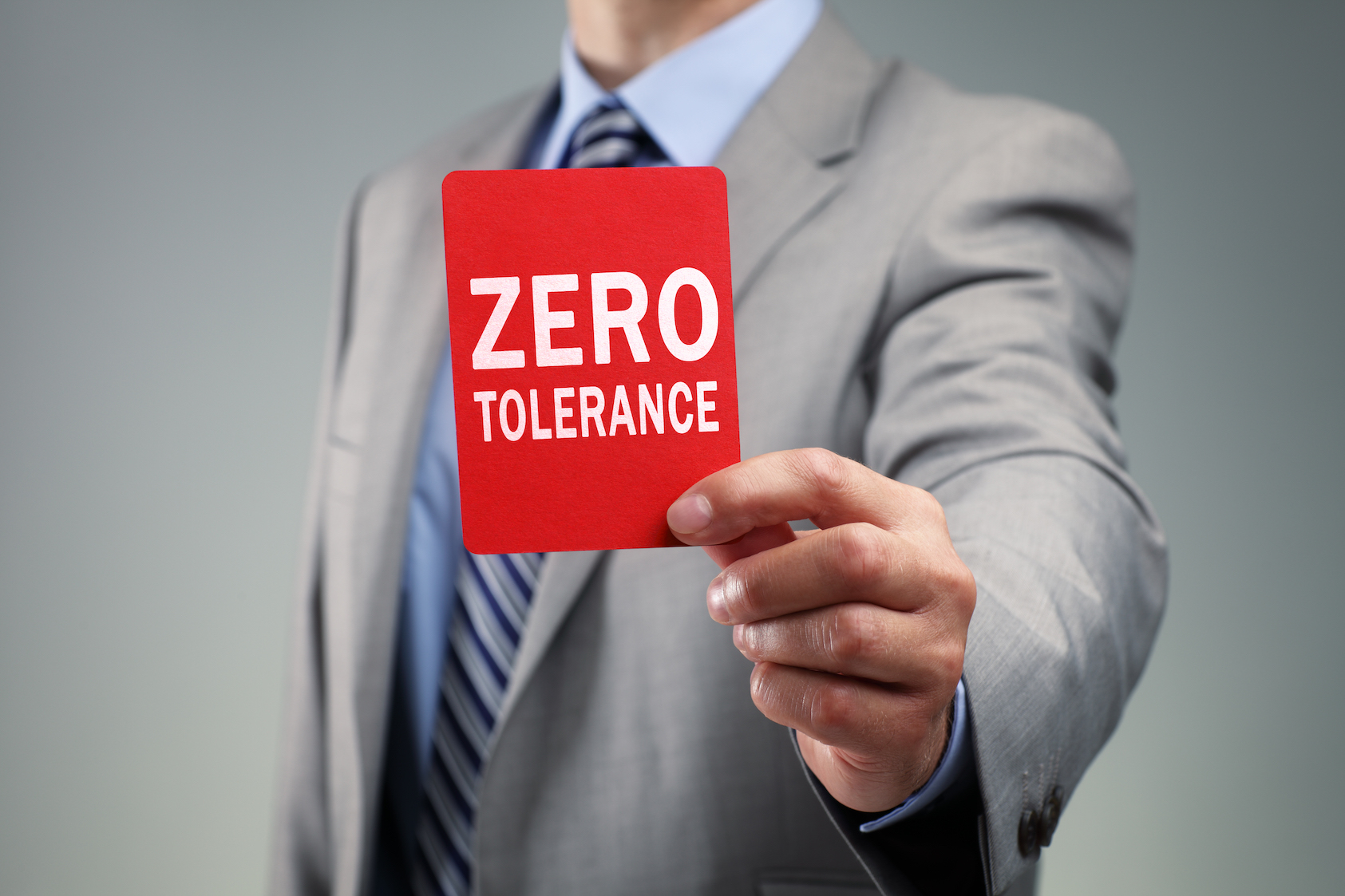Have you read your workplace bullying policy? Does it say your company has a “Zero Tolerance” for bullying in your workplace?
I was recently reading an article by bullying consultant, Hadyn Olsen, that questioned the “Zero Tolerance” approach to workplace bullying. On the one hand, having a zero tolerance approach makes sense. Bullying can result in serious harm and injury, in some cases to the point where a target ends their life.
On the other hand, it begs the question, what does a zero tolerance actually mean? Is it realistic and achievable?
In his nearly 20 years of experience of dealing with bullying in workplaces, Olsen has connected zero tolerance with a metaphorical use of force. Zero tolerance indicates stamping bullying out by any means necessary in the workplace. It is wrapped in concepts of adversity, discipline and punishment, that in itself relies on employees making formal complaints.
Unfortunately, the research indicates employees are unlikely to use company grievance procedures to tackle bullying. Australian research indicates that employees are more likely to use other tactics with ignoring (55%) and avoidance (48%) being more common strategies used in regards to workplace bullying. Only 9% use company grievance procedures.
Australian companies also must ensure that the process used is legally compliant. It needs to meet the expectations of the Fair Work Act who could deem it an unfair dismissal. Therefore, even if a complaint was to be substantiated, which often it cannot be due to lack of strong evidence, the targeted employee may remain in that same work environment.
However, underneath the zero tolerance approach, is a lack of addressing the root cause of the workplace bullying problem. By focusing on the individuals, it fails to address the structure that allows the bullying behaviour to occur.
Are you curious to learn more about how you can prevent and address workplace bullying?
Contact us now to start the conversation

